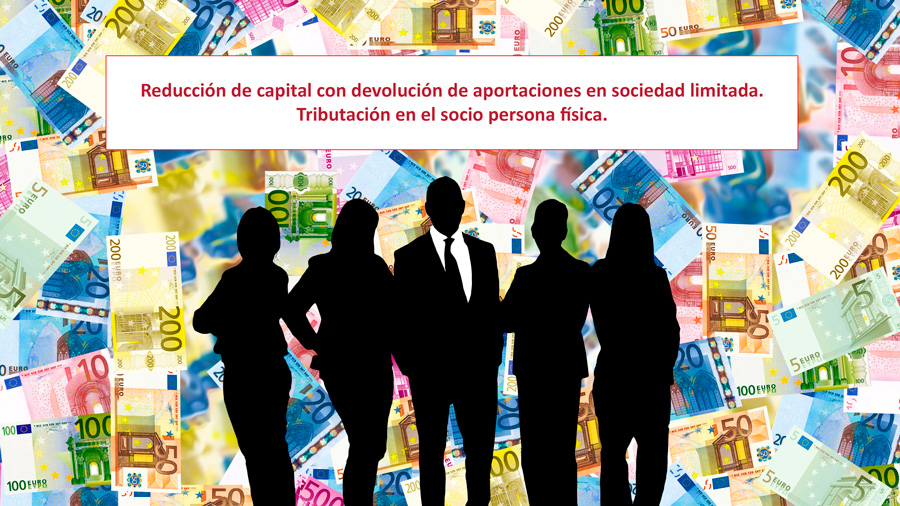What is a capital reduction by return of contributions? In a previous article of our colleague, Macarena Ruiz, entitled “Reduction of capital with return of contributions” she indicated that: “the reduction of capital by return of contributions has the particularity that the value of the contributions either in monetary amount or in movable or immovable goods, really leave the company and return to the hands of its partners, leaving the latter to participate in the company or reducing their percentage in the same one”.
Then the question arises, how does this refund affect the partner from the fiscal point of view in his income tax return? For this we will have to turn to section a) of article 33.3 of Law 35/2006, of November 28, 2006, on Personal Income Tax (LIRPF).
First of all we must distinguish if the capital reduction[1] comes from:
- Previous contributions, or from.
- Undistributed profits.
1. Reduction of capital with return of previous contributions
In this case, when the purpose of the capital reduction is the return of contributions and does not come from undistributed profits, when the difference between the value of the Equity (*) of the company, corresponding to the last fiscal year closed prior to the date on which the reduction takes place, and the acquisition value (AV) of said shares, has a positive sign, said amount will be considered as income from movable capital (RCM) in the shareholder, up to the limit of said difference with a positive sign.
Límite RCM = FP – VA
The excess over said limit will reduce the acquisition value of said shares, value to be taken into account by the shareholder for the calculation of his capital gain/loss when in the future he wishes to dispose of them.
When in the future the shareholder obtains dividends in accordance with article 25.1 a) of the LIRPF from this company and which, in addition, have remained in his possession since the date on which the capital reduction took place, the amount of said dividends received will reduce, with the limit of the income from movable capital for which he was taxed at the time when the capital reduction with return of contributions took place, the acquisition value of the same.
Let us see a clarifying example:
Sole proprietorship in which:
- Acquisition Value (AV) = 150,000 euros.
- No dividends have ever been paid out of reserves.
- Capital reduction of 115,000 euros
| OWN FUNDS 2019 | PREVIEW | |
| 100 | SOCIAL CAPITAL | 150.000,00 |
| 112 | LEGAL RESERVE | 30.000,00 |
| 113 | VOLUNTARY RESERVES | 1.000.000,00 |
| TOTAL FFPP | 1.150.000,00 | |
FFPP = 1.150.000,00 euros (*)
LIMIT RCM = 1.150.000, 00 – 150.000= 1.000.000 euros
In our example, the 115,000 euros would be taxed as RCM, as it does not exceed the limit calculated in accordance with the rule (1,000,000 euros).
2. Capital reduction from retained earnings
In this second case, the amount of this refund of contributions received will reduce the acquisition value (AV) of the shares using the FIFO criterion, i.e. reducing the acquisition value of those acquired first, until they are cancelled. Any excess that may result will be taxed to the shareholder as income from movable capital.
(*) For these purposes, the value of the equity referred to in the rule shall be reduced by the amount of the profits distributed prior to the date of the capital reduction, from reserves included in the aforementioned equity, as well as by the amount of the legally unavailable reserves included in said equity which have been generated after the acquisition of the shares or holdings. In the above example, the calculation of the PPF does not take into account the 30,000 euros of the legal reserve.
As can be seen, when the shareholders are individuals, the distribution of dividends in a company is not something to be done without having calculated well what the impact may be, as we must take into account both the balance sheet and the way in which the previous contributions were made and possible previous distributions, which is why, as always, it is recommended that specialised professionals be consulted.
[1] Remember that we are referring to unlisted companies, normally limited companies.

 Español
Español Русский
Русский
